Blank Canvas
Black and white acrylic on canvas, 24 inch by 24 inch.
Loops inside a loop, 9 hours.
This project is an exploration of loops, both as a visual language and as a metaphor for existence. Using black and white acrylic paint on canvas, I repeatedly draw, cover, and redraw, layering shapes over shapes and meanings over meanings. Inspired by The Myth of Sisyphus, I approach each iteration as both a repetition and a renewal, searching for purpose within the act of doing itself.
Through this process, the canvas becomes a record of persistence. It holds traces of creation, erasure, and re-creation. What begins as circles gradually shifts into other forms as boredom, adaptation, and curiosity interrupt the cycle. Over time, even the act of covering, which was first meant to erase, becomes part of the visible story. Brushstrokes and textures reveal the history beneath the surface.
This is a loop of loops, a way to find meaning from the meaningless, and perhaps to accept the endless climb as its own form of art.
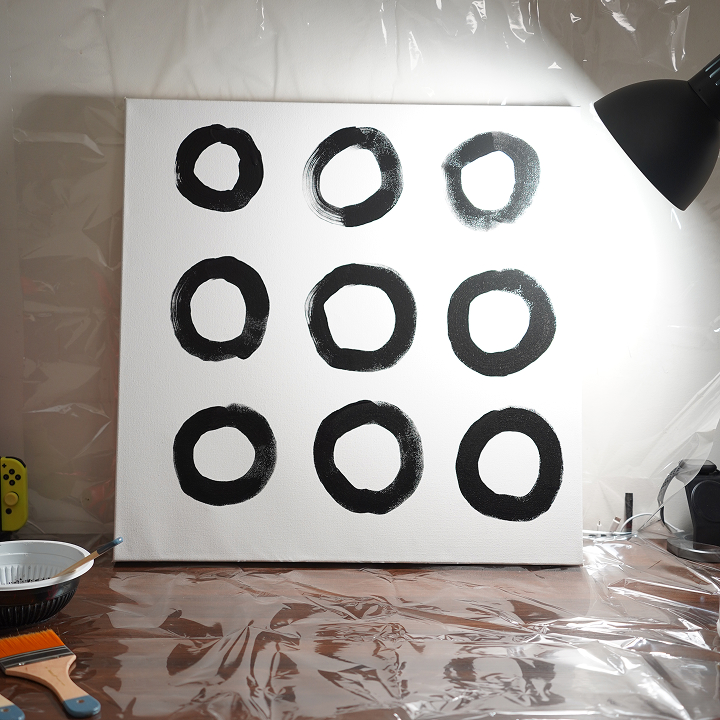
1st Iteration – Painting
It was my first time painting on a canvas with acrylic paint. Even though I have a degree in visual design, I never had the chance to work with paintbrushes like this. It was harder than I expected to make well-shaped circles.
I started with circles because it’s a shape that kept appearing when I asked others to draw something representing death, life, and loops. As I painted the nine circles, I kept trying to find meaning in the act itself, just like the message from my first project, Myth of Sisyphus.
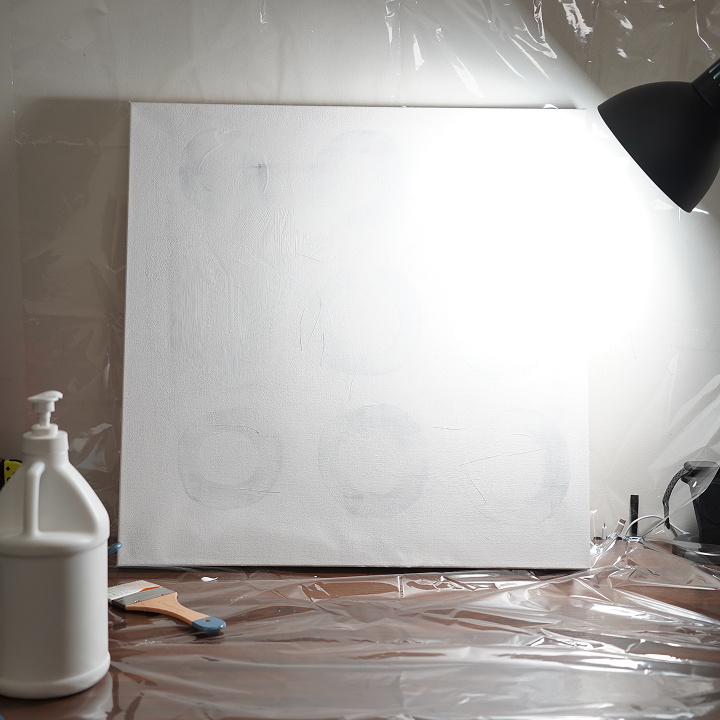
1st Iteration – Covering
After the first layer dried, I covered the circles with white acrylic paint. It felt strange to paint over what I had just made. In some ways, it felt like erasing mistakes. And just like in life, covering up mistakes takes time. It made me think about how often we find ourselves in the loop of making, covering, redoing.
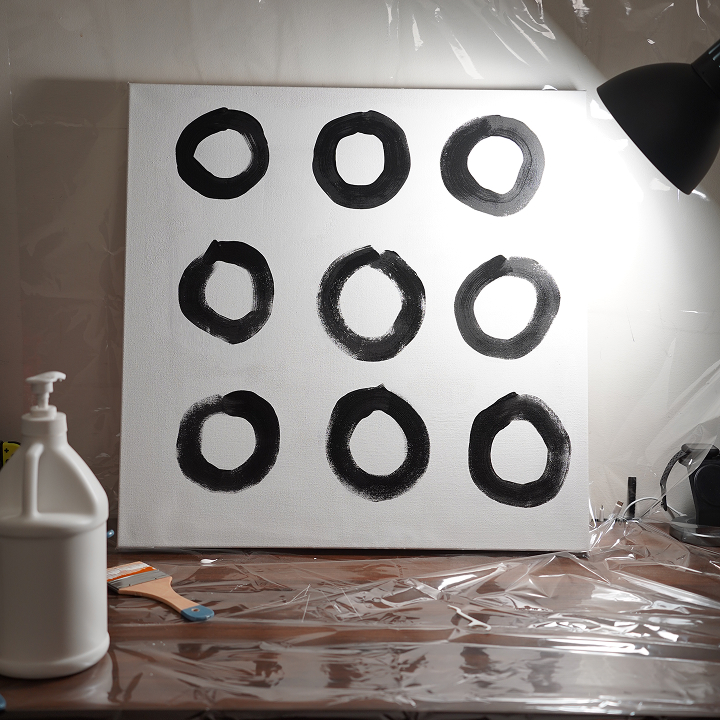
2nd Iteration – Painting
The white paint took even longer to dry than the black. With the second set of circles, it really started to feel like a loop. It felt easier than the first time because the previous black circles weren’t fully hidden beneath the white. The original layer had extra thickness, making the canvas uneven. The past was still there, just beneath the surface.
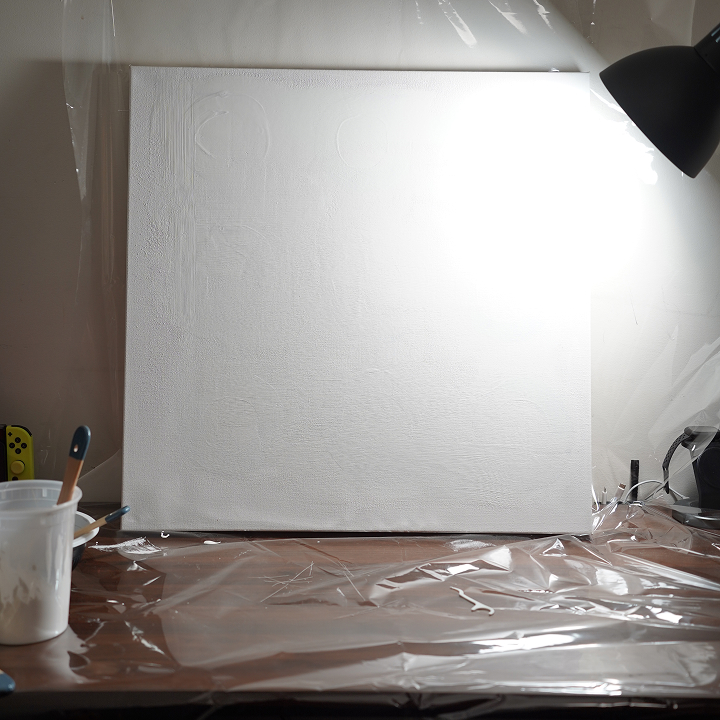
2nd Iteration – Covering
During the first covering, I struggled because I didn’t have a bowl to hold the paint. For the second covering, I poured some white paint into a bowl and added water to make it smoother. This time, I accidentally started painting over the circles before they were completely dry. Little smudges of black mixed into my white brushstrokes. It felt as if a tiny being having a great influence. But in the end, it was covered.
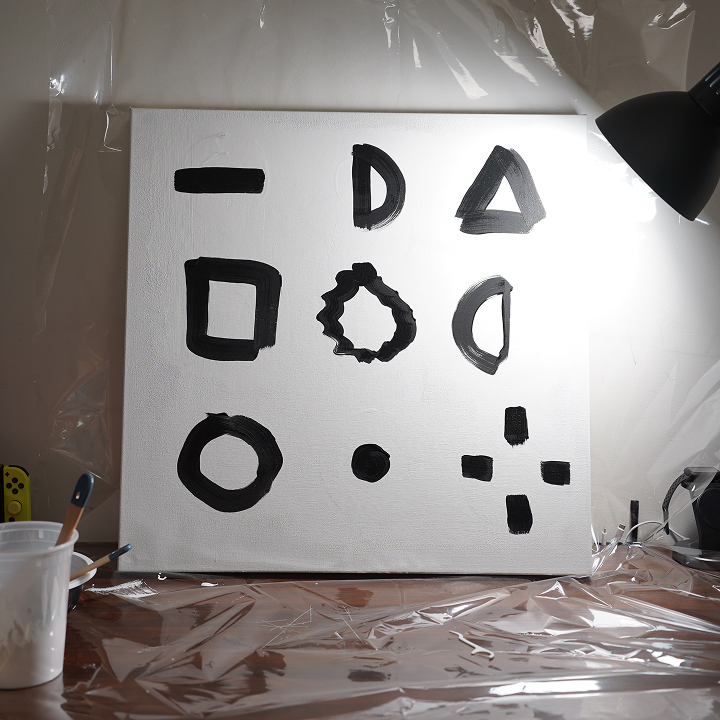
3rd Iteration – Painting
For the third iteration, I decided to change my approach. Instead of repeating the same circles, I started drawing other shapes over the covered layers. I began with a spiky circle, then added a square, a triangle, and other random forms.
At some point, drawing only circles stopped feeling fun. I wanted to break out of the repetition, not completely abandoning the loop, but shifting it. Maybe adding variation is part of surviving the loop, finding small ways to make it bearable or interesting.
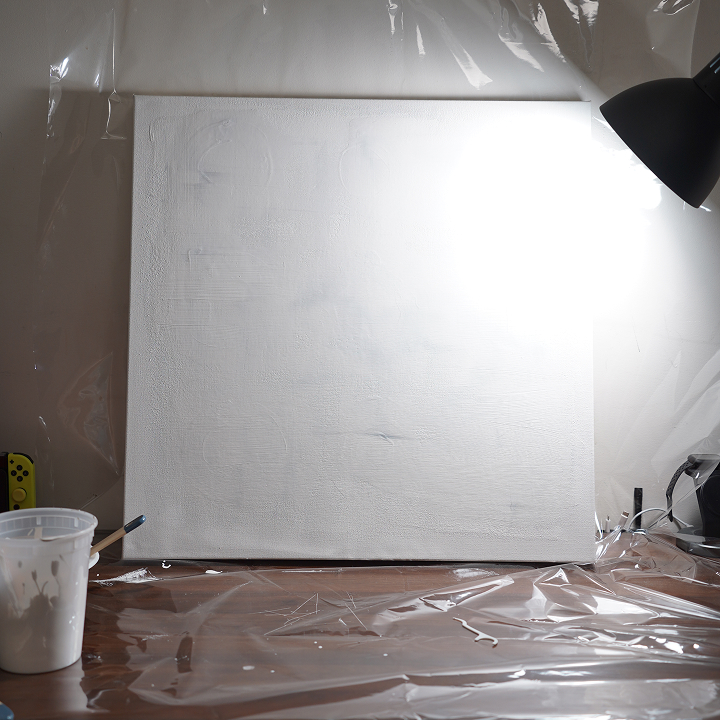
3rd Iteration – Covering
By the third covering, I felt like I had adapted to the loop. I found ways to make the process smoother, easier than before. This time, I didn’t just focus on erasing the shapes. I started paying attention to the covering itself. I made intentional patterns with the white paint, realizing that the brushstrokes were just as visible as the shapes beneath them.
I painted a thick layer of white over the black forms, then spread it vertically, then horizontally, almost like weaving the paint. Even the act of covering became part of the composition. It made me wonder if the loop isn’t just about repetition, but also about noticing the small changes each time.
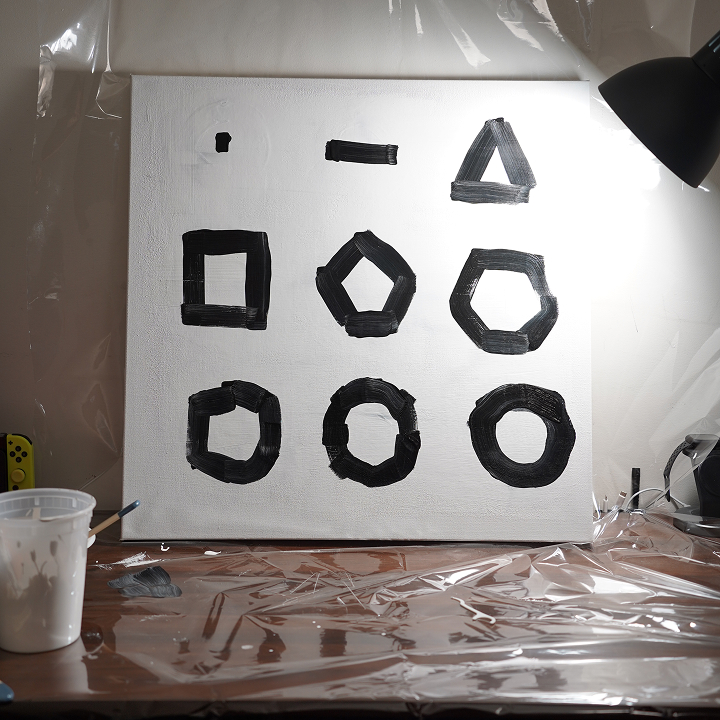
4th Iteration – Painting
Before starting the fourth iteration, Kandinsky’s Point and Line to Plane came to mind. I thought about how everything begins from a single point and expands into lines and shapes. With that in mind, I decided to begin this round with dots. I have been drawing nine shapes in each iteration, so this time I started with just one dot and continued up to nine.
After placing the dots, I connected them. The first was just a dot, then a line, then a triangle, a square, a pentagon, a hexagon, a heptagon, an octagon, and finally a nonagon. I noticed that the more dots I added, the closer the shape became to a circle. It felt like another kind of loop, returning back to where I began.
As I worked, I started to see each dot as a failure. But as the failures added up, the shape became stronger and more complete. The mistakes built on each other, and together they made something better.
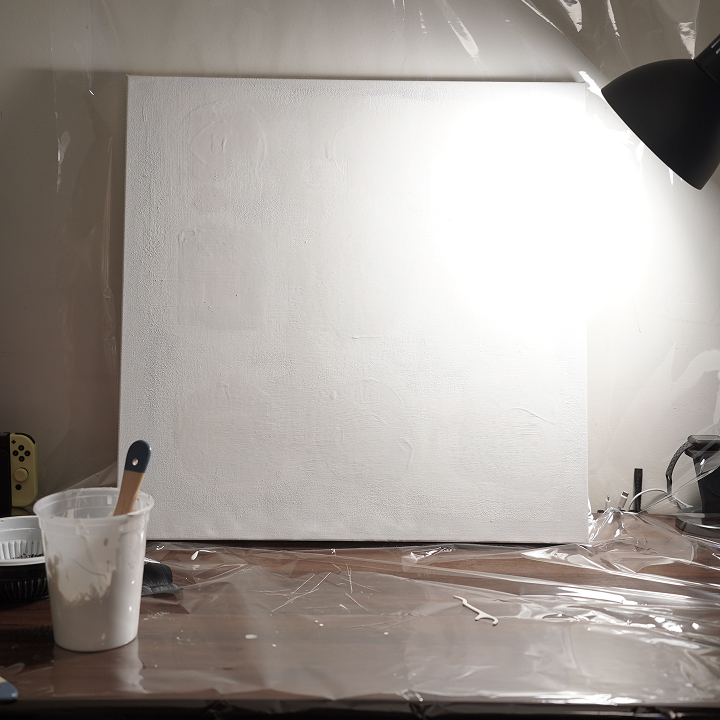
4th Iteration – Covering
The entire process took much longer than I expected. I originally planned to complete at least five iterations, hoping to see what might come out of the loop if I pushed it further. But after nearly nine hours, I had only made it through four.
It made me think about how much time we spend on the everyday things we rarely notice. Simple actions like drawing, covering, waiting for paint to dry, things that seem small, start to add up. The repetition, the waiting, the slow build of layers felt like a reflection of daily life. Time slips away inside routines, but maybe that is the loop itself. Even when it feels like nothing changes, something is still building beneath the surface.